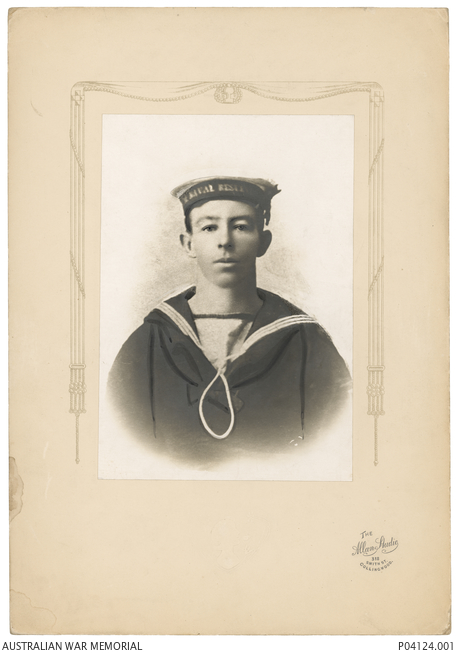The Pockley family - Activities
Examine the images and film below, and answer the discussion questions.
The Australian Naval and Military Expeditionary Force (AN&MEF) on their way to New Guinea, 1914. (AWM A03272)
- This was the first group of soldiers to depart from Australia. How do they appear in this photograph? How do you think they might have been feeling?
- What expectations do you think they might have had?
Able Seaman William Williams was the first Australian wounded in the First World War. He later died as a result of his injuries and his death was reported in newspapers across Australia.
- How might this news have affected perceptions of war at home in Australia?
Harold Septimus Power, Stretcher Bearers (1922, oil on canvas, 69 x 94 cm, AWM ART03645)
Harold Septimus Power travelled to France in 1917 as an official war artist, where he witnessed the actions of stretcher bearers firsthand.
- How have the stretcher bearers been depicted in his painting?
- How has he emphasised the dangers associated with their role?
John's original grave at Hangard Wood, c. 1918–1919. (Robert C King, AWM P02911.076)
-
Although John was buried in a marked grave, this grave could not be located after the Armistice, despite the assistance provided by the Wounded and Missing Enquiry Bureau of the Australian Red Cross. Investigate the role of this organisation. How did they provide assistance to families anxiously waiting to hear about the fate of their loved ones?
- John’s name is on the Villers-Bretonneux Memorial. Research this memorial. Who is remembered on it? Do you think this memorial would have been important for families at home in Australia? Why or why not?



